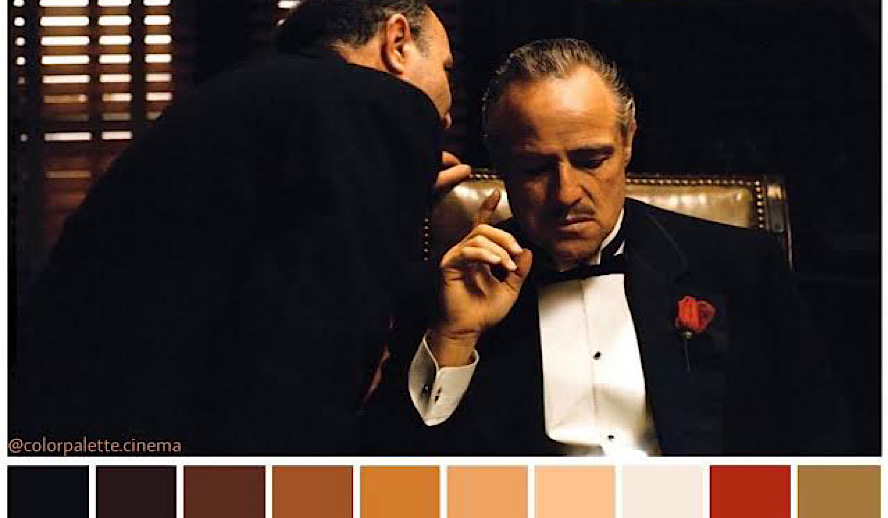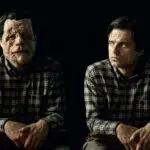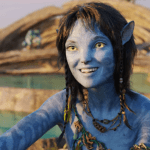Table of Contents

Video Version of this Article
Photo: ‘The Godfather’
TV and film have the acute power to emotionally change and impact us. Characters, plot, and directing all play a role in the quality of the media and its ability to elicit a strong emotional reaction, but there is another aspect that is always overlooked. Known as color theory, many films and shows use color to create a certain emotion or set the mood. Colors are intimately connected with psychology and certain colors will invoke different feelings, something good directors take into account. There are different set schemes to color theory and film, with each one serving a different purpose.
The process is an underrated but simple one, with the movie maker picking an overall color palette to base the entire film on, then colors for each individual scene and mood they want to set. Color tells a story, it’s something we subconsciously internalize while watching a film, and recognizing and applying this power adds another complex and important aspect to the creation process.
Related article: EXCLUSIVE: ‘Dune’ Full Commentary, Reactions, Making Of – Timothee Chalamet, Zendaya, Oscar Isaac
Related article: ‘House of Gucci’ Full Commentary & Behind the Scenes – Lady Gaga, Adam Driver, Jared Leto, Al Pacino
Colors and Themes in Film and TV: What is Color Theory?
Color Theory is not just about an aesthetic, colors can create certain tones and moods for a given film. Color is divided into three different categories that all affect our perception of them – hue, saturation, and brightness.
Hue is what the color is itself. It can refer to what degree color is a combination of one of the primary colors, red, blue, or yellow. The secondary colors are green, orange, and purple and are created by mixing the primary colors. Saturation refers to how intense or pure the color is. Artists define this as how much grey is mixed with the color. Something with low saturation will tend to look more black and white. Brightness or value is how dark or light a color is. This is also known as luminance.
The Color Wheel
A color wheel is a circular wheel of color hues that will show you the connecting relationships between primary, secondary, and tertiary colors. It helps viewers and those who are unfamiliar with art to see the different color combinations, complementary, monochromatic, analogous, triadic, and tetradic. It’s also divided based on what colors are classified as warm and cool. This temperature of the color will create different feelings in a viewer, the warm colors being anywhere from red to yellow and then cooler colors being blue to green and purple.
Related article: EVOLUTION: Every Henry Cavill Role From 2001 to 2021, All Performances Exceptionally Poignant
Related article: EVOLUTION: Every Chris Evans Role From 1997 to 2020, All Performances Exceptionally Poignant
To understand the different colors and their psychology, we divided them into three categories. Primary colors include those that cannot be mixed by any other color, red, yellow, and blue. Secondary colors come from mixing the above-mentioned hues and tertiary comes from mixing a secondary and primary color together. Six colors fit this description, red-orange, yellow-orange, yellow-green, blue-green, blue-purple, and red-purple.
Picking A Color Palette For the Film
Film color palettes are not picked at random, it takes careful deliberation from the producers and directors. When conducting the pre-production process, movie makers create mood boards and brainstorm what color palette fits each specific scene. Sometimes a movie will have a color palette with one central, recurring color, monochromatic, but often times it’s important to add variety. After establishing this primary, the team will work to create a diverse set of colors in order to add an extra layer of meaning and distinction to said scenes.
Despite this all, in order for there to be certain cohesion and rhythm, the film’s colors have to be balanced. Whether it means using certain palettes like complementary, analogous, triadic, or schemes like discordant colors, it’s important to establish a theme.
Related article: #metoo Revolution: Powerful Questions That Need Answers
Related article: FACT-CHECKED Series: Timothee Chalamet and 32 Facts about The Young Superstar
Monochromatic Color Palette
The monochromatic color palette consists of a single base hue with shades, tones, and tints. Shades of color mean darker variations and tints are lighter variations. Words that directors often use to describe this moment include harmonious, undivided, and lulling.
Analogous Palette
This palette has three colors that are next to each other on the wheel in one group. They are usually made from a primary color, a supporting color, and a third one that is either a good blend of the two or has a strong accent to it. Words that define this include like-minded, kindred, and simpatico.
Complementary Palette
These are when opposite colors on the color wheel are used to represent conflict. These include purple and yellow, blue and orange, and red and green. They help create a big contrast in a film whether to show deeply contrasting characters or themes. Words for this palette included opposition, dueling, and tense.
Related article: MUST WATCH – The Hollywood Insider’s CEO Pritan Ambroase’s Love Letter to Black Lives Matter – VIDEO
Subscribe to The Hollywood Insider’s YouTube Channel, by clicking here.
Triadic Color Palette
This is when there are three colors, equally spaced out on the color wheel. One color will be the dominant one while the others are meant to complement it. A prime example is red, blue, and yellow because they resemble words like vibrant, balanced, and evenly matched.
Tetradic Color Palette
This is when there are four colors, often bold ones that use primary hues and then three accents. The hard part of this palette is that with so many colors involved it’s difficult to maintain a balance.
Discordant Color
Often classified as something that diverts from the film’s original palette, this technique helps focus on something specific in the film. It helps viewers focus on a particular aspect like a red rose on a white backdrop or colorful clothing on a black and white background.
Associative Color
Using reoccurring colors, this technique helps create visual connections to the characters and parts of the film. If a character is continually associated with a certain color then we tend to connect them to a specific theme and emotional reaction.
Limited Time Offer – FREE Subscription to The Hollywood Insider
Transitional Color
This shift of a color theme is used throughout a course of a film to tell an evolving story. It can be an evolution of character or theme, but it can be seen in someone wearing white clothing and then later wearing only black to symbolize a shift from good to evil.
How To Use Color Theory in Story Telling
Color in the film not only evokes certain emotions but it draws attention to a specific detail or moment, like a red handle on a white door or green clothing to resemble jealousy. It sets the tone and understanding of the impact behind not just a palette, but each individual color grants you another level of skill and comprehension.
Each color’s meaning depends on what emotion society has traditionally assigned it too as well as historical and global contexts. Different cultures, races, and communities can have different meanings and by recognizing them we can see what exactly in shaping our responses to color in film.
Basic Colors and Their Meanings
Red is one of the most extreme colors, it’s used to show love and passion and desire and sometimes even violence and danger. It does a good job of capturing your attention by being one of the most visible colors. Scientifically, red focuses behind your retina which means your lens have to grow more convex to pull the color forward. This directly leads to a viewer thinking that the color red is synonymous with moving forward and therefore is classified as an attention-seeking color.
Related article: The Hollywood Insider’s CEO Pritan Ambroase: “The Importance of Venice Film Festival as the Protector of Cinema”
Related article: The Masters of Cinema Archives: The Hollywood Insider Pays Tribute to ‘La Vie En Rose’, Exclusive Interview with Director Olivier Dahan
Related article: – Want GUARANTEED SUCCESS? Remove these ten words from your vocabulary| Transform your life INSTANTLY
On the other end, yellow is very luminous and is biologically the color that we perceive easiest. An interesting color, in different countries it represents different things. China refers to adult films as yellow films and Japan uses yellow to represent courage. Traditionally, it’s the color of wisdom and knowledge and sometimes, because of its purity, naivety too.
Purple is a color we often don’t see in nature but it has the most powerful wavelength, which makes it hard for our eyes to see. Since purple dye was so expensive to buy and difficult to make, it was used only by royalty. Therefore, in film, today purple is used to evoke a sense of mystery, nobility, royalty, and things that are fantastical and illusory.
Wielding Color The Right Way
Picking a palette and theme for a film is often a difficult thing to do but by understanding the historical, cultural, and emotional impact behind it, you can elevate the impact and meaning of a film. Movies are there to tell a story, to evoke something inside of us that sticks even after the screen goes dark, and with the right colors and themes, your story can become even more powerful than before.
By Mireille Karadanaian
Click here to read The Hollywood Insider’s CEO Pritan Ambroase’s love letter to Cinema, TV and Media. An excerpt from the love letter: The Hollywood Insider’s CEO/editor-in-chief Pritan Ambroase affirms, “We have the space and time for all your stories, no matter who/what/where you are. Media/Cinema/TV have a responsibility to better the world and The Hollywood Insider will continue to do so. Talent, diversity and authenticity matter in Cinema/TV, media and storytelling. In fact, I reckon that we should announce “talent-diversity-authenticity-storytelling-Cinema-Oscars-Academy-Awards” as synonyms of each other. We show respect to talent and stories regardless of their skin color, race, gender, sexuality, religion, nationality, etc., thus allowing authenticity into this system just by something as simple as accepting and showing respect to the human species’ factual diversity. We become greater just by respecting and appreciating talent in all its shapes, sizes, and forms. Award winners, which includes nominees, must be chosen on the greatness of their talent ALONE.
I am sure I am speaking for a multitude of Cinema lovers all over the world when I speak of the following sentiments that this medium of art has blessed me with. Cinema taught me about our world, at times in English and at times through the beautiful one-inch bar of subtitles. I learned from the stories in the global movies that we are all alike across all borders. Remember that one of the best symbols of many great civilizations and their prosperity has been the art they have left behind. This art can be in the form of paintings, sculptures, architecture, writings, inventions, etc. For our modern society, Cinema happens to be one of them. Cinema is more than just a form of entertainment, it is an integral part of society. I love the world uniting, be it for Cinema, TV. media, art, fashion, sport, etc. Please keep this going full speed.”
More Interesting Stories From The Hollywood Insider
– Want GUARANTEED SUCCESS? Remove these ten words from your vocabulary| Transform your life INSTANTLY
– A Tribute to Martin Scorsese: A Complete Analysis of the Life and Career of the Man Who Lives and Breathes Cinema
– Do you know the hidden messages in ‘Call Me By Your Name’? Find out behind the scenes facts in the full commentary and In-depth analysis of the cinematic masterpiece
– A Tribute To The Academy Awards: All Best Actor/Actress Speeches From The Beginning Of Oscars 1929-2019 | From Rami Malek, Leonardo DiCaprio To Denzel Washington, Halle Berry & Beyond | From Olivia Colman, Meryl Streep To Bette Davis & Beyond
– In the 32nd Year Of His Career, Keanu Reeves’ Face Continues To Reign After Launching Movies Earning Over $4.3 Billion In Total – “John Wick”, “Toy Story 4”, “Matrix”, And Many More
colors and themes in film and tv, colors and themes in film and tv, colors and themes in film and tv, colors and themes in film and tv, colors and themes in film and tv, colors and themes in film and tv, colors and themes in film and tv, colors and themes in film and tv, colors and themes in film and tv, colors and themes in film and tv, colors and themes in film and tv, colors and themes in film and tv, colors and themes in film and tv, colors and themes in film and tv, colors and themes in film and tv, colors and themes in film and tv, colors and themes in film and tv, colors and themes in film and tv, colors and themes in film and tv, colors and themes in film and tv, colors and themes in film and tv, colors and themes in film and tv, colors and themes in film and tv, colors and themes in film and tv, colors and themes in film and tv

Mireille Karadanaian is an entertainment journalist, whose passion for reviewing upcoming TV shows and movies has existed since a young age. She writes reviews and feature entertainment stories for The Hollywood Insider’s inclusive and authentic platform, contributing to the important stories being told in media today. Mireille loves discussing the impact today’s media is making on younger generations who emulate what they see on screen and the Internet, a double-edged sword. Her stories often include the importance of creating content that inspires inclusion, positivity, and productive messages to all audiences and generations. Mireille’s love of covering TV shows, movies, and exciting questions that are being asked in the media world is seen in her writing and her ability to not just report facts but also tell a story.








